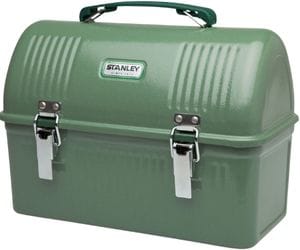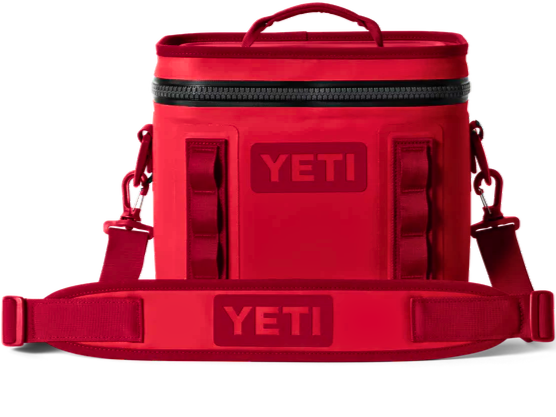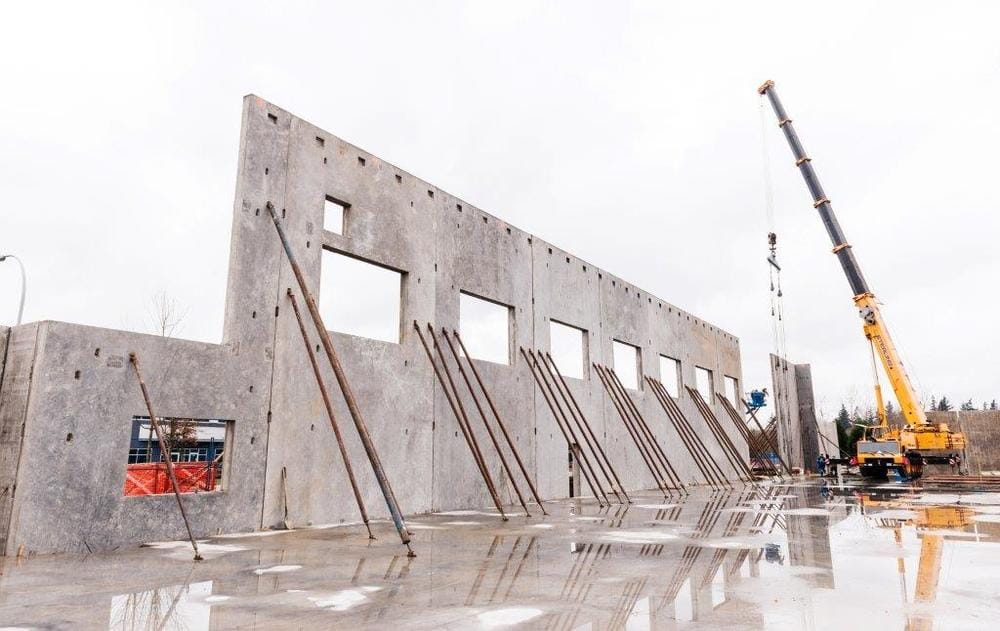What is a Construction Lunch Box?
If you’ve ever seen someone carrying a lunch box to a construction site, it’s probably more than just a place to stash a sandwich.
A construction lunch box is built tougher than the average lunch box and comes with features that make it ideal for long days on-site.
These lunch boxes, sometimes called lunch buckets, cooler bags, or insulated lunch bags, are made from heavy-duty materials. Think stainless steel, thick plastic, or durable lunch cooler designs that can stand up to knocks, drops, and the occasional tumble out of a ute.
The best lunch boxes aren’t just sturdy—they’re smart. Many are designed with ample space for different types of food items, from a thermos bottle of soup to sandwich bags, salads, and snacks.
But durability is just one part of the equation. A good lunch box for construction work also keeps your food at the desired temperature—whether you want a cold meal with cold drinks, or a warm meal that’s still piping hot at lunchtime.
Many top models include features like insulated compartments, removable ice packs, and cold retention technology. These features help keep your food safe and appetising, no matter how long your shift.
Another key factor is easy access. When you’re wearing protective clothing and gloves, you don’t want to fiddle with complicated latches or zippers. That’s why many lunch boxes for the construction site come with main compartments that open wide, easy-to-use clips, or even shoulder straps for hands-free carrying. Some even throw in extras like a bottle opener or sections for small items like cutlery or napkins.
Best Lunch Boxes Made for Construction Sites (2025 Top Picks)
Now for the fun part—let’s look at some of the best lunch boxes that construction workers are loving in 2025! These options are built tough, practical, and loaded with extra features that make them ideal for the construction industry.
Stanley Classic Lunch Box
A legend on the job site, the Stanley Classic Lunch Box is known for its heavy-duty materials and timeless design. It’s made from stainless steel, offering excellent durability and resistance to dents and dings. The large main compartment easily fits your meals, snacks, and drinks, and its rugged latch keeps everything secure. Its built-in thermos holder is perfect for keeping a thermos bottle handy for hot meals or warm water. If you’re after reliability, this one’s hard to beat.

YETI - Hopper Flip®8 Soft Cooler
With a capacity to hold up to 11 cans or 4.5 kg of ice, it ensures your food and drinks stay cold throughout the day.
The cooler features ColdCell™ Insulation, a closed-cell rubber foam that provides superior cold-holding compared to standard soft coolers. Its HydroLok™ Zipper is 100% leakproof, preventing any spills, while the DryHide™ Shell is made from high-density fabric that's waterproof, puncture-resistant, and resistant to UV rays and mildew.
The wide-mouth opening allows for easy access to contents, and the HitchPoint™ Grid offers attachment points for accessories like bottle openers or carabiners. Weighing just 1.2 kg, it's highly portable and perfect for keeping your meals and beverages cold on the go.

Klein Tools Tradesman Pro Tough Box
Klein Tools brings their expertise from power tools to the lunch game with the Tradesman Pro Tough Box. Built to withstand a drop test, this lunch box offers rugged construction, a removable ice pack, and plenty of storage for cold food and hot foods.
Its main compartment has a wide opening for easy access, even with protective clothing on. It’s a solid pick for anyone needing a lunch box that matches the toughness of their tools.

Arctic Zone Titan Deep Freeze
Looking for maximum cold retention? The Arctic Zone Cooler is a good choice. With insulated compartments and heavy-duty zippers, it keeps cold drinks and perishable items safe even on hot days. Its spacious cooler design and extra features, like a built-in bottle opener and multiple pockets for small items, make it a favourite for long shifts.

Igloo Playmate Cooler
A classic in the construction site world, the Igloo Playmate is compact, sturdy, and easy to clean. Its signature tent-top design offers easy access, while the hard-sided construction handles bumps and rough handling. It’s perfect for shorter shifts or when you don’t need to pack much food.

Hydro Flask Insulated Lunch Bag
For those who prefer a sleeker, more portable option, the Hydro Flask Insulated Lunch Bag offers excellent cold retention and portability. While it’s not as heavy-duty as the others, it’s a good lunch box option for supervisors or office workers visiting the site. Its modern design and different colours appeal to workers who value style alongside function.

When and Where Do You Need One?
You might be wondering:
“Do I really need a specialised lunch box for construction work?” The answer: YES—especially when you’re working long hours in the world of construction work.
Think about it. On a typical construction site, you could be outdoors, indoors, or even in remote locations where amenities are limited. Whether you’re working on a house build, a commercial project, or renovations, the rigours of the job site mean you’ll need a lunch solution that holds up.
A quick trip to the shop for a sandwich isn’t always an option, especially when you’re out in the middle of nowhere or when deadlines are tight.
That’s where a good lunch box becomes essential. It ensures your food items—from cold food like salads and drinks to hot meals like soups and casseroles—are kept at the desired temperature for long periods.
These boxes are designed to be portable and easy to carry, with features like a shoulder strap or handles that make them convenient for transporting across uneven terrain or from your vehicle to the work area.
What’s Typically Included in a Construction Lunch Box?
Let’s start with the basics: food items. Sandwiches and wraps are a classic choice, easy to prepare and pack into sandwich bags. But many workers also bring hot meals—like soups, stews, or pasta—packed in a thermos bottle to keep them warm. This way, you can enjoy a hearty, warm meal even in the middle of a busy site.
For those who prefer something cold, salads, fruits, and cold food options like yoghurt are popular picks. To keep them chilled, many lunch boxes include ice packs or removable ice packs, maintaining a cold retention that ensures freshness for long periods.
Don’t forget the drinks!
- A sturdy hydro flask or an insulated water bottle filled with warm water or a cold beverage is a must.
- Cold drinks stay refreshing thanks to the lunch box’s insulated compartments or built-in cooler sections.
Then there are the little extras that make life easier. Many lunch boxes include compartments for small items like cutlery, napkins, and condiments. Some models even feature a bottle opener, which is handy if you’re enjoying a fizzy drink with your meal. Shoulder straps or ergonomic handles are also common, providing easy access when you’re wearing protective clothing or carrying gear.
For longer shifts or remote sites, some workers bring a small cooler or spacious cooler that holds multiple meals, snacks, and drinks.
These models are built to withstand the bumps and drops of a construction site, ensuring your food stays safe and secure.
Who Uses and Buys These Lunch Boxes?
When it comes to the construction industry, a good lunch box is a must-have item for a wide range of people. Of course, construction workers are the most common users. Whether you’re working with power tools, laying foundations, or managing a site, a durable and reliable lunch box is essential for getting through long shifts.
But it’s not just tradespeople out in the field. Office workers and supervisors who spend part of their day on-site also rely on construction lunch boxes. Even though they might not be swinging a hammer, they still need a way to keep their food items safe and appetizing during site visits.
In some cases, small businesses—like subcontracting crews or family-owned construction firms—will buy lunch boxes in bulk for their teams.
This ensures everyone has a reliable lunch solution, fosters a sense of team spirit, and even adds a bit of branding with personalised designs or company logos.
Why Use a Specialised Construction Lunch Box?
If you’re thinking a regular lunch bag from the supermarket is enough for the construction site, think again. A specialised lunch box designed for construction workers offers benefits that regular options just can’t match.
First, there’s durability
The rigours of the job site—dust, dirt, drops, and the occasional accidental kick—can wreak havoc on a flimsy lunch container.
A heavy-duty construction lunch box, made from materials like stainless steel or reinforced plastic, can handle a drop test or two without breaking a sweat.
Next, consider temperature control
Construction workers need their meals to stay at the desired temperature, whether it’s a hot meal in winter or a cold meal during the summer heat.
Insulated compartments, ice packs, and removable ice packs keep hot foods warm and cold drinks chilled, making lunch breaks more enjoyable and safer.
Then there’s easy access
Imagine trying to open a complicated latch with gloved hands or dealing with a zipper that jams after a bit of dust gets in. That’s why many specialised lunch boxes have main compartments with simple latches, shoulder straps for hands-free carrying, and sections for small items like cutlery or napkins. Some even come with extra features like a bottle opener or a dedicated spot for a thermos bottle.
Let’s not forget capacity
Construction workers often spend long periods on-site and need ample space for snacks, drinks, and multiple meals. Some models are designed to double as a small cooler or spacious cooler, giving you flexibility for longer shifts or remote jobs where popping out for lunch isn’t an option.
Challenges of Using a Lunch Box on Construction Sites
First, there’s the issue of dust and debris
On a typical construction site, fine dust from materials like plaster, concrete, and timber can find its way into everything—including your lunch box. This makes food safety an important consideration, especially if you don’t have a construction lunch box with a tight seal or insulated bag design.
Then there’s space
Between toolboxes, power tools, and gear, finding room for a lunch box isn’t always easy. Even a spacious cooler or small cooler needs a safe spot to sit, preferably off the ground and away from hazards.
Workers often stash their lunch in vehicles, which can heat up quickly, or in shaded areas of the site, but these aren’t always ideal for maintaining the desired temperature for hot foods or cold meals.
Weather is another factor
Rain, heatwaves, and freezing temperatures can affect how well your lunch stays fresh. A good lunch box with cold retention or insulated compartments can help, but it’s still a balancing act. Plus, the weight of a heavy-duty lunch box filled with a day’s worth of meals and drinks can be a hassle to carry if it lacks a shoulder strap or ergonomic handle.
Don’t forget the occasional drop test
Accidents happen, and lunch boxes can take a tumble from a scaffold or the back of a ute. Models made with heavy-duty materials like those from Stanley, Klein Tools, or Carhartt Deluxe are better equipped to survive these moments.
Lastly, long hours
Workers often eat on the go, sometimes while standing or even sitting on a stack of materials. This can make handling a lunch box with multiple compartments and small items a bit tricky. That’s why features like easy access, sturdy latches, and extra features (like a bottle opener) can make a big difference.
Conclusion
In the construction industry, the right gear doesn’t just mean having the best power tools or the sturdiest boots. It also means equipping yourself with a good lunch box—one that can stand up to the demands of the construction site and keep your food items safe, fresh, and at the desired temperature.
Throughout this post, we’ve looked at the reasons why a specialised construction worker lunch box is an important consideration. From battling dust and drops to maintaining food safety and providing easy access, these lunch boxes are designed for long hours in tough environments. Whether you call it a lunch bucket, cooler bag, or insulated lunch bag, the goal is the same: to make your lunch break a moment of comfort and refuelling.
With a range of options on the market today, from the iconic Stanley Classic Lunch Box to the Hydro Flask Insulated Lunch Bag, there’s something for every worker. Whether you’re prioritising cold retention, ample space, or extra features, the right choices come down to your personal preferences and the demands of your work.
FAQs
1. What’s the difference between a construction lunch box and a regular lunch box?
A construction lunch box is built from heavy-duty materials, with features like insulated compartments, cold retention, and ample space to handle the demands of the construction site. Regular lunch boxes may not be durable enough for these environments.
2. How do I keep my food cold or hot for long hours?
Choose a lunch box with insulated compartments and use ice packs or a thermos bottle. Removable ice packs and insulated bags help maintain food safety and freshness.
3. Can I use a small cooler or bento box on-site?
A small cooler works if you don’t need much space, but a bento box may not offer the heavy-duty protection or cold retention needed for tough conditions.
4. What’s the best lunch box for heavy-duty use?
Top options include the Stanley Classic Lunch Box, Carhartt Deluxe Cooler, Klein Tools Tough Box, and Arctic Zone Cooler. These models handle rigours of the job site.
5. How do I clean and maintain my lunch box?
Wipe it down with warm, soapy water and let it dry. Many heavy-duty models are designed for easy cleaning, even after exposure to dust and spills.
6. Are extra features like bottle openers or thermos slots worth it?
Absolutely! Extras like a bottle opener, dedicated thermos bottle slots, and compartments for small items add convenience and functionality.
7. Should I buy from official websites or small businesses?
Both options are valid. Official websites offer warranties and trusted quality, while small businesses may provide great value and personal preferences like custom designs.
8. Are there safety concerns with food storage on-site?
Yes, food safety is essential. Always use an insulated lunch bag or box with proper temperature control, and keep cold foods and hot meals separate to prevent contamination.
9. Do lunch boxes come in different sizes and styles?
Yes! From spacious coolers to compact insulated bags, there’s a variety to suit your needs, including different colours and materials.
10. Can a lunch box survive a drop test?
Models made from heavy-duty materials like the Klein Tools Tough Box or Stanley Classic are designed to survive drop tests, making them reliable companions for tough job sites.
Further Reading













